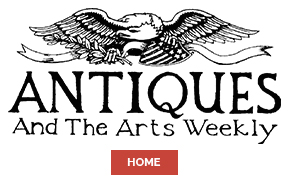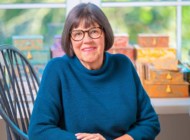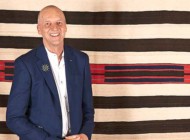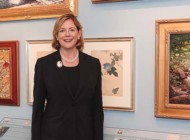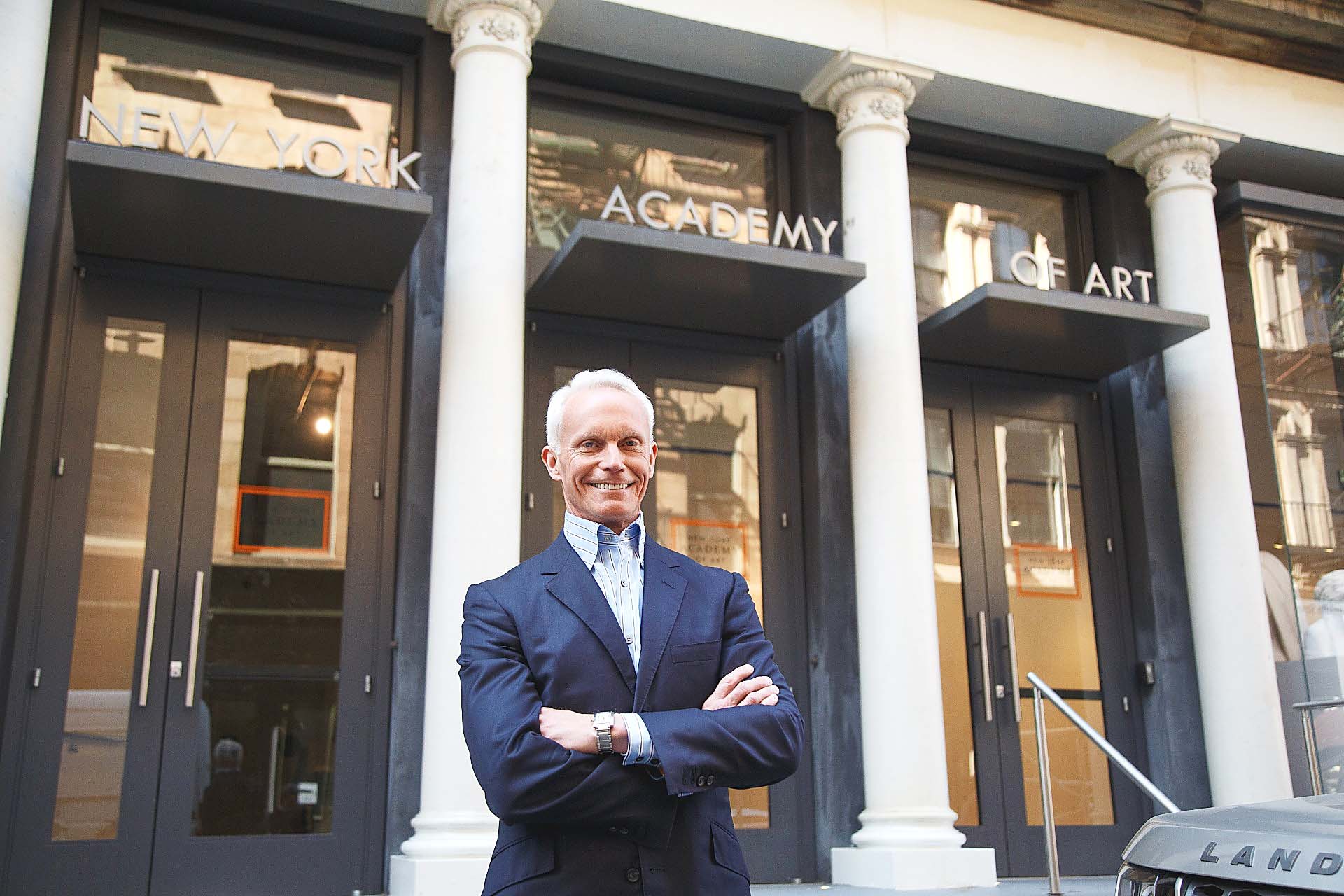
Photo courtesy the New York Academy of Art.
On April 28, the New York Academy of Art’s (NYAA) newest president, Paul R. Provost, PhD, began his tenure. With previous experience as the CEO of Art Bridges Foundation, as well as numerous years at Christie’s and in the museum sector as a curator, Provost is a jack-of-all-trades. Interested in learning about his experience so far — and what got him there — Antiques and The Arts Weekly connected with Provost to get the inside scoop on what it’s like to be the head of one of the nation’s premier independent graduate art schools.
Congratulations on your new appointment. What does becoming the president of such a premier art school mean to you?
I am thrilled to be at the Academy and to return to a teaching and learning institution — we have great students and an extraordinary faculty, and I’m eager to build on the Academy’s strengths. I am also excited to be leading an organization which has such a great mission. It’s tremendously gratifying to come to the Academy’s campus every day and to see the inspiring work that the faculty and the students are doing!
Can you elaborate a little bit on the Academy’s mission?
Of course. We combine intensive technical training in the fine arts with active critical discourse. We are committed to foundational academic training but not using those skills to look into the past, but to use them for critical discourse in the present. We believe that rigorously trained artists are best able to realize their artistic vision. The students are taught traditional methods and techniques and encouraged to use those skills to make vital, compelling contemporary art.
During my first couple of weeks at the Academy, the spring semester for the MFA students was coming to a close. During those final weeks before graduation, all of the graduating MFA students have critiques with the faculty. I attended many of those sessions, and it was both helpful and instructive for me to get a sense of the rhythm of the school as well as to meet the faculty and to see them so engaged with their students. I also met quite a few students and talked with them about their work and their experience at the Academy. So much of the students’ work embodies this foundational academic training, and their artistic production is quite edgy, and very much of the present moment. It became very clear to me how the students are using those skills for serious contemporary discourse. Looking at how the art world has changed over the past 20 or 30 years — when at one point figurative art wasn’t part of the critical dialogue — it is again now, and it’s considered a preeminent vehicle for expression, and so it’s wonderful to see how the students’ work embraces this.
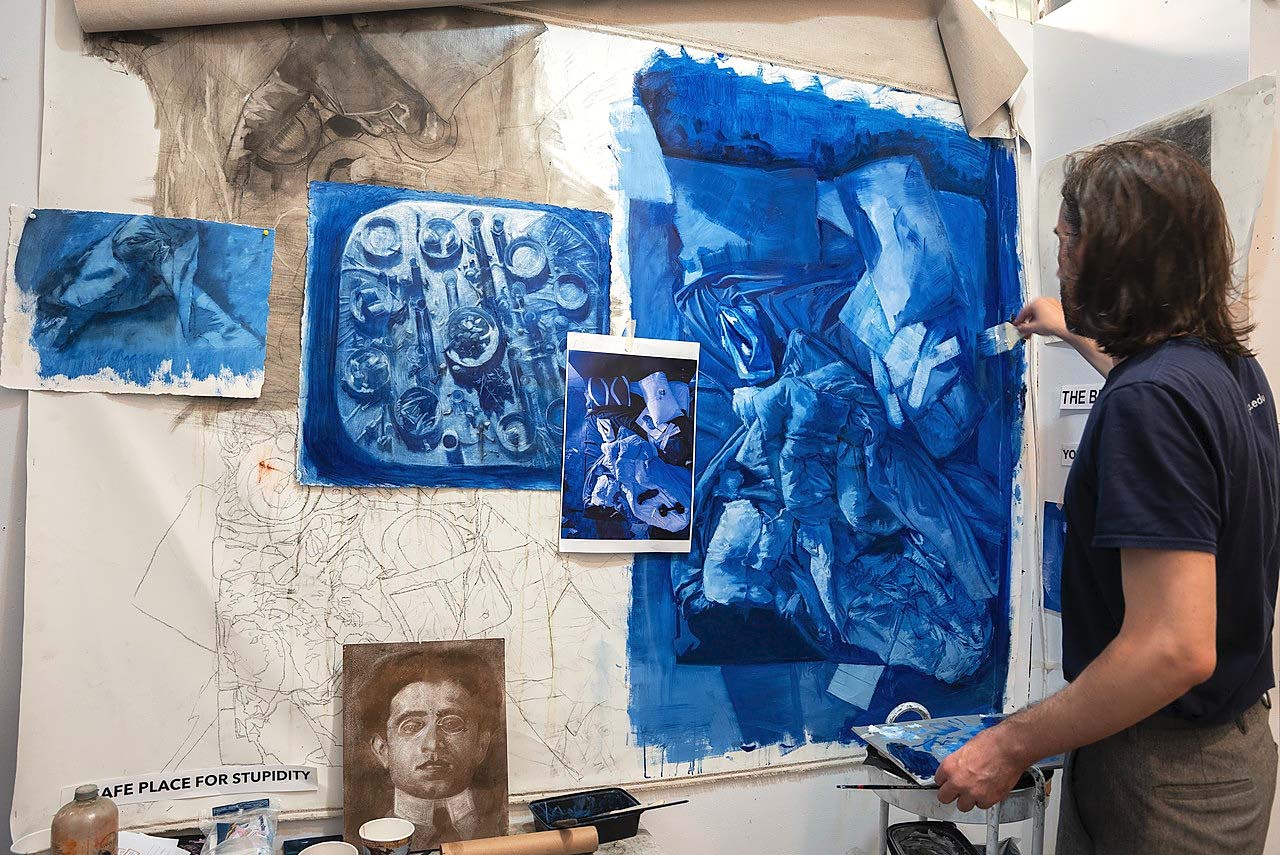
Captured at the Academy’s recent “open studios” day, which takes place near the end of every school year. Photo courtesy the New York Academy of Art.
Over the course of your career, you’ve held leadership positions in both the non-profit sphere and commercial art world. How does this new role bring together the talents you’ve honed from your previous experience?
I’ve had many chapters to my career: I’ve been a curator and an academic, I’ve been a teacher, I’ve been on the commercial side of the art world as a business leader, I was the founding CEO of Art Bridges Foundation and now I’m back in higher education.
So, to circle back to your question, I’m here at the Academy in part as a businessperson to run the Academy, but I’m also here having had extensive experience in the art world in all those many dimensions. What’s most interesting for me, is that over the course of my career and all these roles, the through-line has always been works of art. No matter where I’ve been and what I’ve been doing, whether it’s been researching works of art, or writing about works of art in graduate school, or teaching about works of art when I was an instructor at Princeton, or whether I was working with clients to make decisions around works of art at Christie’s, or making sure that we were providing access to great art at Art Bridges Foundation, the work of art has always been preeminent. Now, this current iteration is leading an organization that’s making and creating works of art. And that’s a very exciting thing to see.
In your previous tenure as founding CEO of the Art Bridges Foundation, initiatives focused on diversity, equity, accessibility and inclusion (DEAI) were among your priorities. In this current moment, when DEI and DEAI are under political attack, why do you feel these are important?
At Art Bridges Foundation, we were a startup, and as its first CEO, I was in a position to build the organization from the ground up. A key part of my board chair Alice Walton’s vision for Art Bridges and her other philanthropic organization is to create access. Art Bridges’ mission was to expand access to American art around the nation. Providing access is a broader way of thinking about diversity and inclusion.
What’s wonderful about being here at the Academy is its distinguished history of recruiting international students. Between 20 and 30 percent of our students are from countries other than the United States, and the nature of having so many international students makes it very much a place where one thinks about inclusion, one thinks about diversity and above all, one thinks about access. As I’ve been getting to know the Academy, we’re very much an organization that’s been doing that work for a very long time and in an organic way.
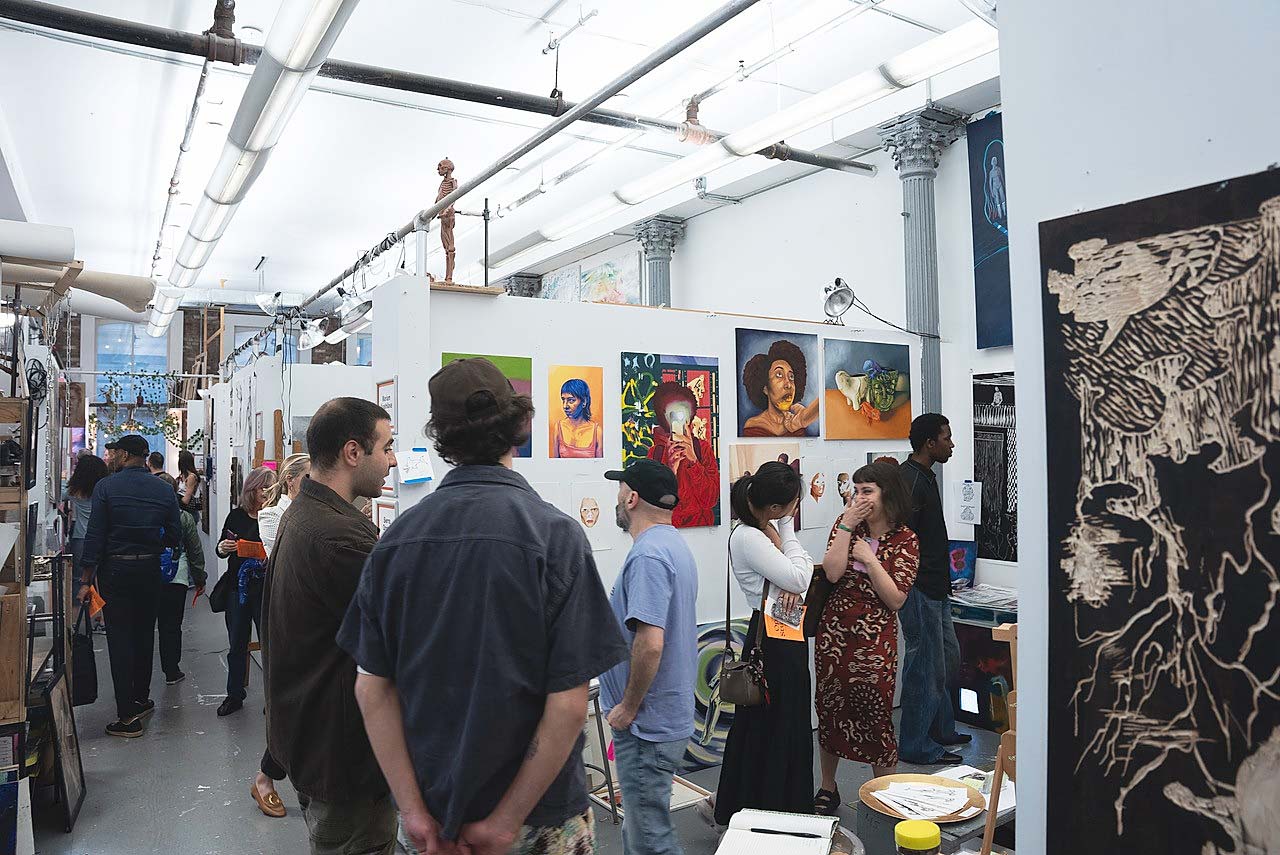
Captured at the Academy’s recent “open studios” day, which takes place near the end of every school year. Photo courtesy the New York Academy of Art.
In addition to DEAI initiatives, what are some of the current challenges faced by NYAA?
As a graduate art school with a distinguished MFA program, we are part of the larger community of higher education, and so we are concerned with issues that our peer art schools are also facing, which includes recruiting and retaining international students. On the one hand, the current climate is a challenge for recruiting international students, but we are finding that so many of our international students are still excited and committed to coming to New York and coming to the Academy.
Other challenges facing the higher education community are recent changes with the federal student loan program. We’ve had internal meetings dedicated to this topic. Additionally, we’re having discussions with students about what those challenges look like and how we can help mitigate them so our students can continue in their academic programs.
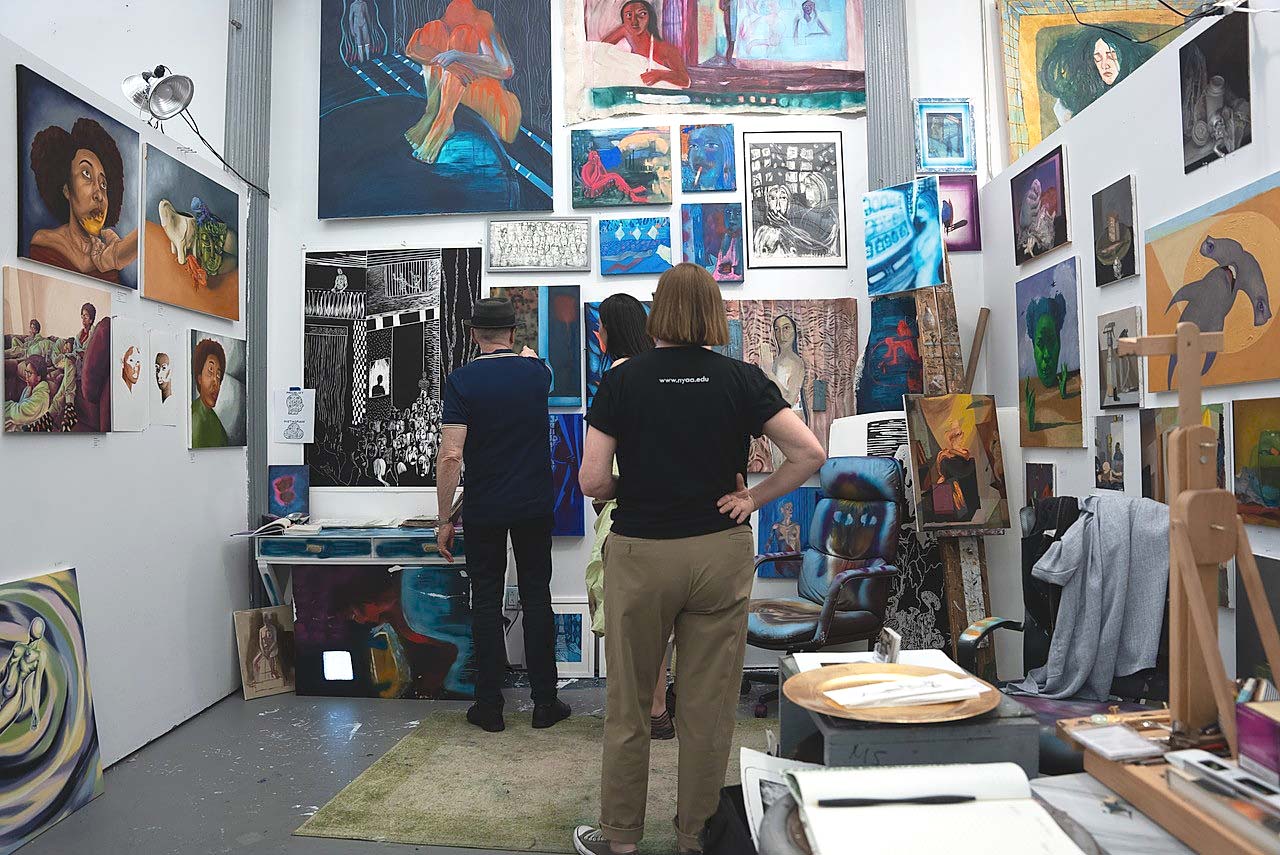
Captured at the Academy’s recent “open studios” day, which takes place near the end of every school year. Photo courtesy the New York Academy of Art.
Any areas you’d like to develop and/or strengthen?
The Academy is already known for its rigorous MFA program, and in my mind, I’m interested in burnishing it even more. We are a school that prizes excellence, and that’s reflected in our MFA program. We’re something of a standout organization, and within that context, we are committed to excellence and providing our students with best teaching and instruction possible, and we will continue to honor and build on those strengths.
I’m also interested in raising the Academy’s profile within the art world — both the academic and commercial sectors. That is already happening, in part because so many of our alumni have been picked up and are now represented by some major galleries around the country and the world. That’s a real barometer of success, and it’s been tremendously gratifying to see this trend continuing. The idea that so many of our alumni are being represented by major galleries all around the globe and their works are being placed in major museums and private collections is something that we’re seeing more and more of and want to continue to develop and support.
The Academy has also been selected again to have a booth in The Armory Show in September. While the fair does include some nonprofits in their line-up, the Academy is the only art school that has been invited to exhibit this year. Of course, I’ll be there for the opening and VIP day on September 4. We have works by two outstanding recent alumni, Kerry R. Thompson and Kylee Snow, exhibiting in our booth. For me, I believe this type of programming and a platform like The Armory Show raises the Academy’s profile among collectors, gallerists and museums.
—Kiersten Busch
